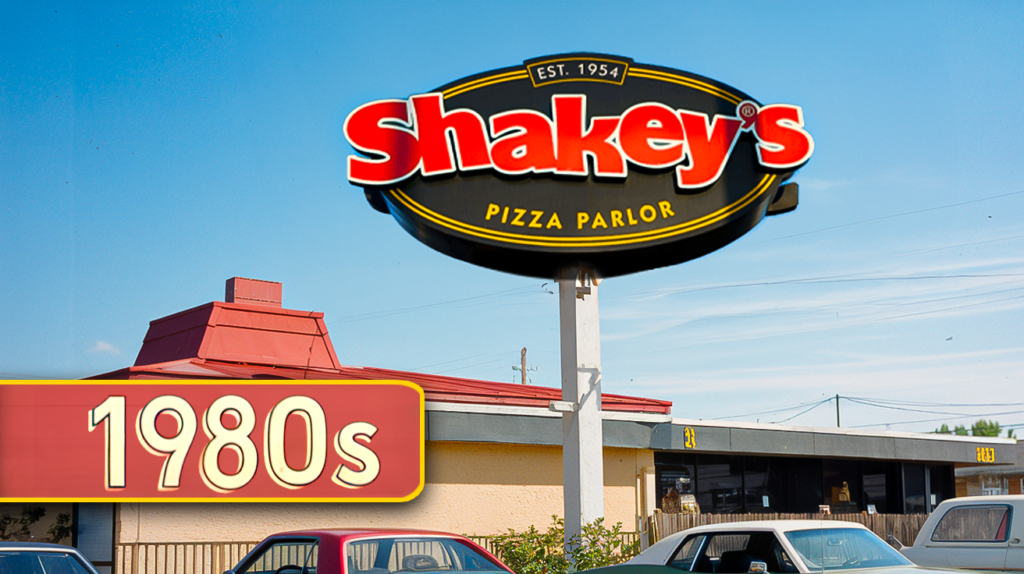
Ever wondered why pizza arcades disappeared from American malls? These family entertainment centers once dominated weekend outings for millions of families. Kids played arcade games while parents relaxed with a slice, watching animatronic bands perform on stage. Technical problems and changing entertainment preferences spelled doom for these hybrid businesses.
The rise of home gaming systems delivered the final blow to this unique dining experience.
25. ShowBiz Pizza Place: Animatronics and Pizza
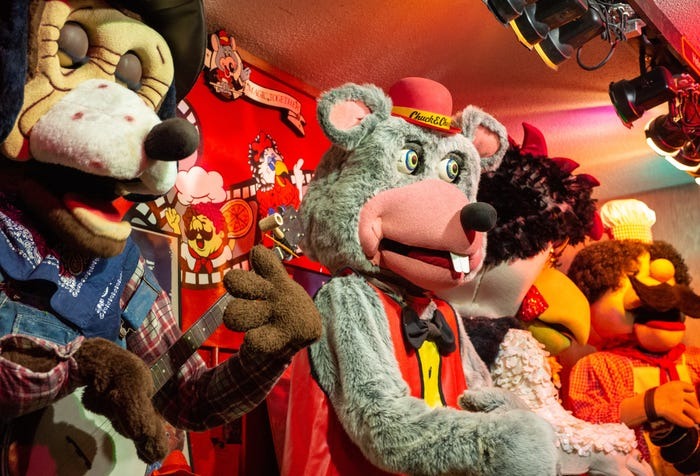
Robert L. Brock founded ShowBiz Pizza Place in 1980, creating an entertainment destination that merged dining with robotic performances. Families gathered to watch the Rock-afire Explosion, an animatronic band that performed while patrons enjoyed their meals. The restaurants contained extensive arcade areas where children played games and collected tickets for prizes. Financial difficulties and a 1984 merger with Chuck E. Cheese’s parent company eventually led to ShowBiz’s transformation. While the brand disappeared, the Rock-afire Explosion maintains a cult following today, with collectors paying thousands for original animatronic characters that once serenaded you between bites of pizza.
24. Pizza Haven: Pioneering Pizza Delivery
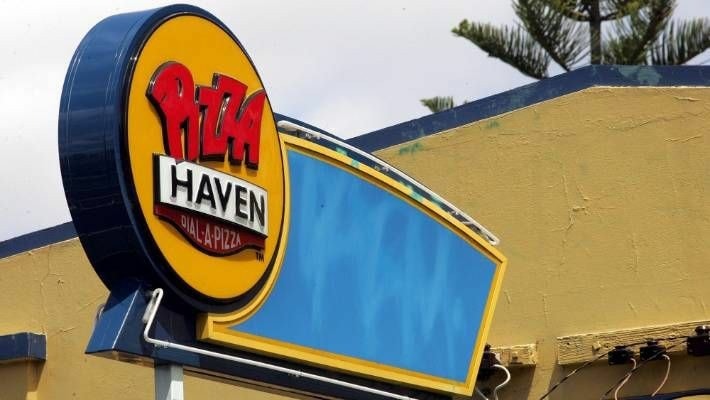
In 1958, Pizza Haven revolutionized how Americans enjoyed pizza by becoming one of the first chains to offer home delivery. While most people still considered pizza a restaurant-only food, Pizza Haven brought hot pies directly to customers’ doorsteps. Their convenient service helped them expand to 42 locations throughout California, building a loyal customer base who appreciated their reliable delivery. Despite their innovation, Pizza Haven couldn’t match the marketing power and efficiency of emerging giants like Domino’s and Pizza Hut. Next time you tap an app to order dinner without leaving your couch, remember Pizza Haven—they solved the “I want pizza but don’t want to go out” problem decades before food delivery apps existed.
23. Cap’n Galley’s Pizza & Pipes: A Musical Dining Experience

The late 1960s saw the birth of Cap’n Galley’s Pizza & Pipes, a unique restaurant concept centered around magnificent Wurlitzer organs. Diners enjoyed their meals accompanied by everything from classical music to contemporary hits played on these massive instruments salvaged from old theaters. Special occasions and birthdays were regularly celebrated at these restaurants, which created an atmosphere unlike any other pizza establishment of the era. Maintaining these complex vintage organs became increasingly difficult as parts and qualified technicians became scarce. The thundering bass notes of their mighty Wurlitzers fell silent forever when the last location closed in the early 2000s, leaving behind only recordings and memories of pizza served with a side of “Phantom of the Opera.”
22. Pizzaland: New York Style in New Jersey
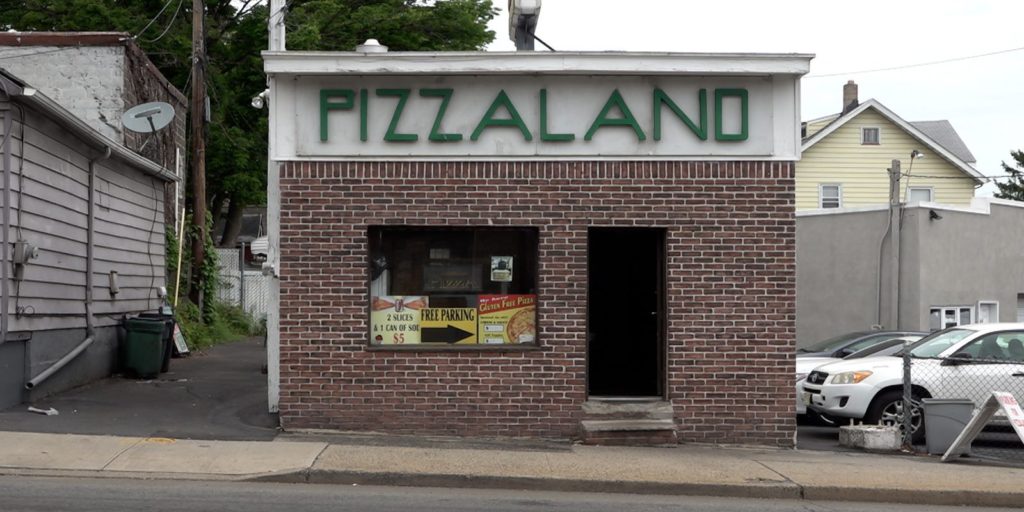
Beginning in 1975, Pizzaland brought authentic New York-style pizza to New Jersey neighborhoods, quickly developing a reputation for perfectly thin, foldable slices. The small chain expanded modestly throughout the Northeast while maintaining consistent quality and a neighborhood pizzeria atmosphere. Affordable prices and generous portions made Pizzaland a destination for quick lunches and family dinners during its heyday. Competition from both national chains and local pizzerias eventually forced most locations to close their doors. Though you might not find their pizzerias anymore, Pizzaland achieved immortality with a brief two-second cameo in “The Sopranos” opening credits, making this small Jersey chain more culturally significant than many national brands that outsold them.
21. Pizza Time Theatre: The Dawn of Edutainment

Atari founder Nolan Bushnell pioneered the family entertainment center concept when he opened the first Pizza Time Theatre in 1977. Customers watched Chuck E. Cheese and his animatronic friends perform while enjoying pizza and playing arcade games in a format that revolutionized family dining. The company expanded rapidly across America, recognizing families’ desire for restaurants where children remained entertained throughout meals. Financial instability led to Pizza Time Theatre’s bankruptcy in 1984, resulting in acquisition by rival ShowBiz Pizza Place. This corporate shuffle may seem like failure, but Bushnell’s vision transformed children’s dining forever—proving sometimes the brand dies while the idea lives on, as evidenced by today’s thriving $910 million Chuck E. Cheese enterprise built on Pizza Time’s foundation.
20. The Organ Grinder: Portland’s Pipe Organ Pizza
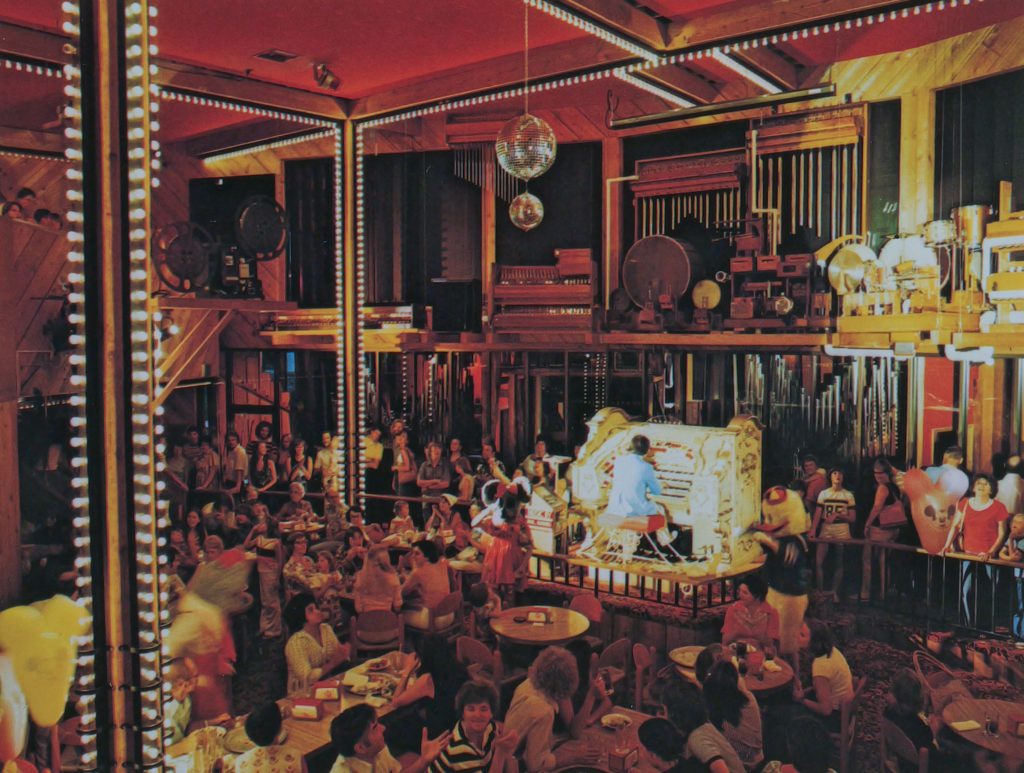
Portland’s dining scene gained a theatrical element when The Organ Grinder opened in 1973, featuring a massive 4,000-pipe Wurlitzer organ as its centerpiece. Professional organists performed on this instrument originally built for a Denver theater, playing diverse musical selections while patrons dined. Theatrical lighting changed with the music throughout the cavernous space, creating an immersive atmosphere unique in the casual dining sector. Finding specialized technicians to maintain the complicated instrument grew increasingly difficult as the years passed. When The Organ Grinder closed in 1996, Portland lost more than a pizza place—its magnificent Wurlitzer was dismantled and sold to collectors, silencing what had been the largest theater organ in the Pacific Northwest and making you wish you’d ordered just one more pie while the “Wedding March” played.
19. Pizza Haven (Australia): Down Under Delight
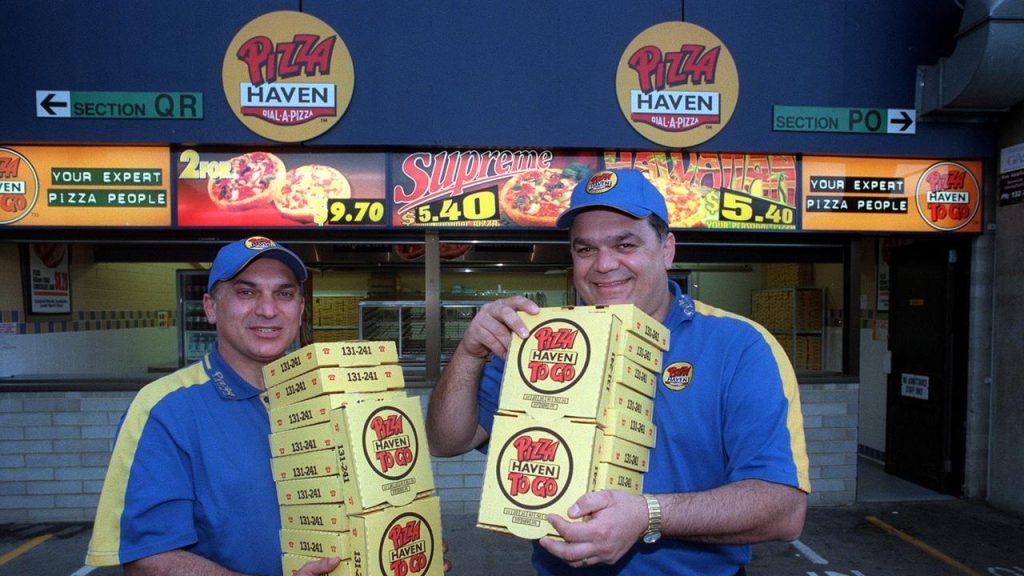
Four Greek-Australian brothers transformed their country’s pizza landscape by founding Pizza Haven Australia in 1984. Their unique recipes blended traditional Mediterranean techniques with Australian ingredients, distinguishing them from American-style chains entering the market. Strategic marketing and competitive pricing helped the company expand rapidly, appealing particularly to budget-conscious families and university students. Competing with global giants like Domino’s proved increasingly difficult as the market matured. When the brothers sold to Domino’s in 2005, they didn’t just end a brand—they completed a classic entrepreneurial success story, having identified a market gap, built a 150-restaurant empire from scratch, and exited with a multimillion-dollar deal that would make any business school professor nod approvingly.
18. Pizza Showtime: Australia’s Animatronic Adventure

Australia’s attempt to replicate the American entertainment restaurant model came in 1980 with the launch of Pizza Showtime. Mechanical performers entertained diners in a family-friendly environment modeled after successful American concepts like Chuck E. Cheese’s. Technical difficulties plagued the operation as animatronic characters frequently malfunctioned, creating inconsistent experiences for customers. Management challenges and high maintenance costs compounded these problems. Pizza Showtime’s four-year lifespan serves as a cautionary tale in restaurant history—proving that even when you import a successful concept, robots that break down while singing “Waltzing Matilda” won’t keep customers coming back for a second slice.
17. Brothers 3: Wisconsin’s Local Favorite
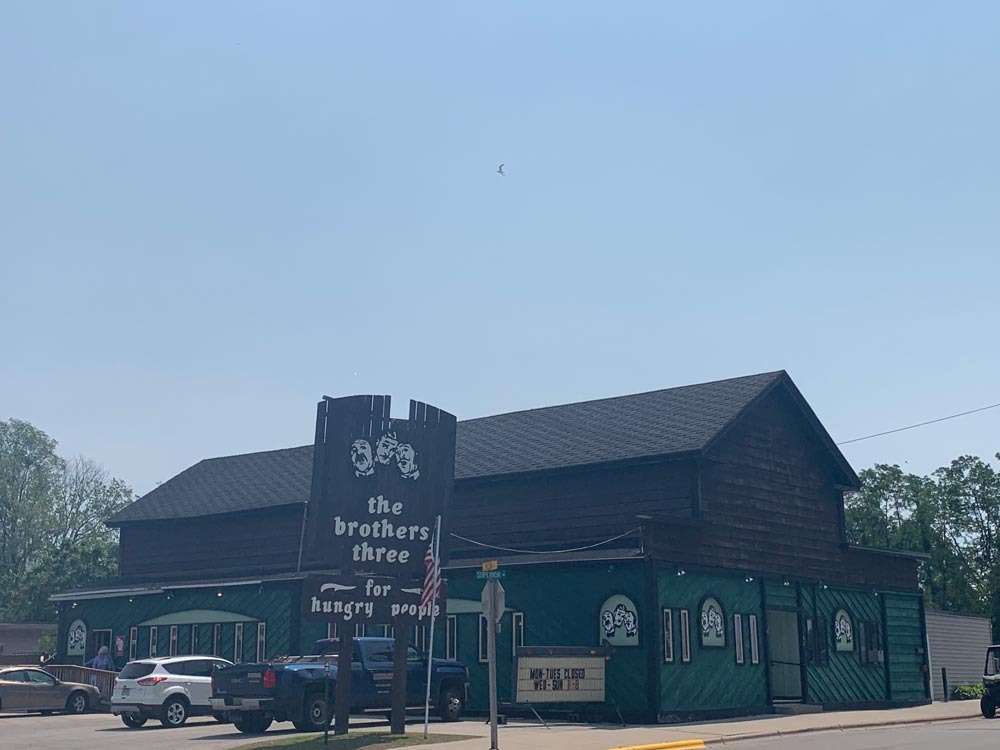
Wisconsin’s pizza scene gained a distinctive regional chain when Brothers 3 opened its first location in Marinette in 1972. The restaurants served square-cut thin crust pizzas topped with ingredients from local Wisconsin suppliers, creating a truly Midwestern pizza experience. Family ownership kept the focus on small towns and communities that larger chains often overlooked. Quality inconsistencies led to the closure of most Brothers 3 locations by the mid-1990s. While most regional chains fade completely, Brothers 3 achieved what marketing experts call “localized immortality”—the Marinette original still serves the same recipe today, letting you taste a slice of Wisconsin pizza history that’s outlasted countless national competitors with deeper pockets.
16. Papa’s Pizza: Community and Comfort
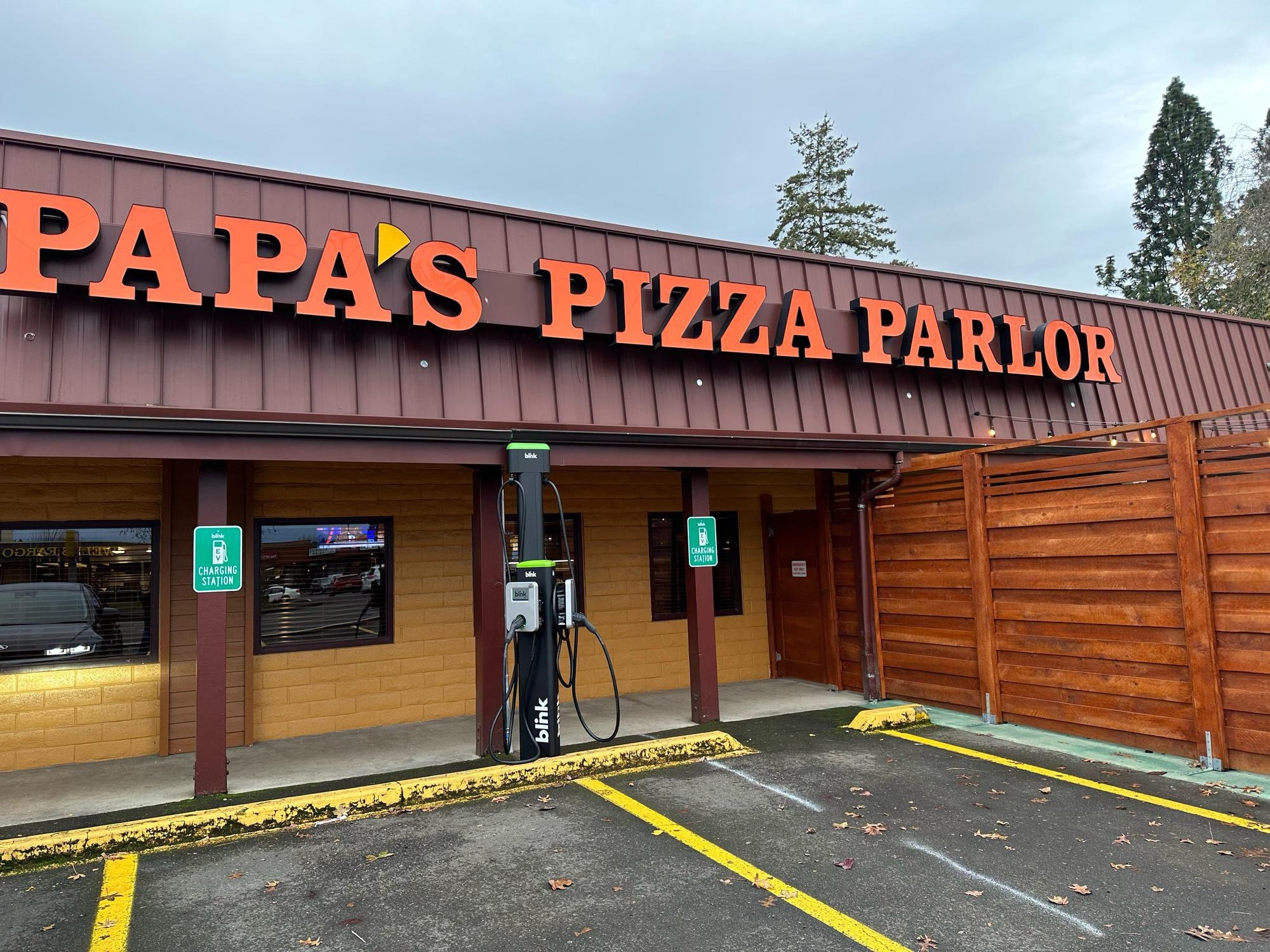
During the 1980s, Papa’s Pizza established itself as a neighborhood fixture in communities across America. Their rustic interior design featured wooden booths and checkered tablecloths, creating a homey atmosphere while customers waited for generously-topped pizzas. Community involvement formed a core part of the brand’s identity through sponsorships of youth sports teams and school fundraising events. National pizza chains with massive advertising budgets gradually overshadowed Papa’s more modest operations. The real magic of Papa’s—connecting neighbors over pizza before “community engagement” became a corporate buzzword—has inspired today’s successful independent pizzerias that prioritize local relationships over standardization and realize that sometimes you want to eat where everybody knows your name.
15. EATZA Pizza: Arizona’s All-You-Can-Eat Extravaganza
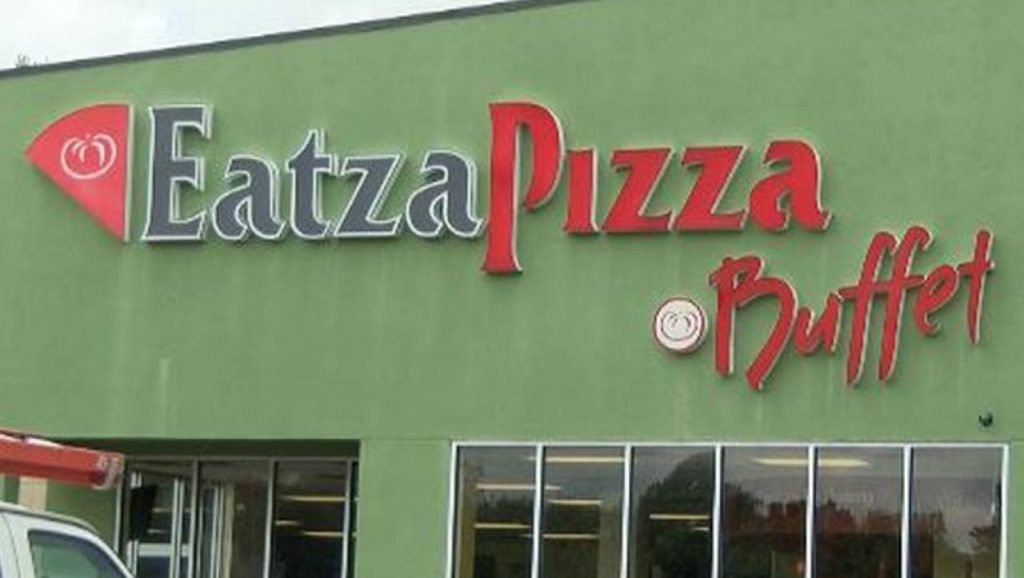
The all-you-can-eat pizza concept took new form when EATZA Pizza opened in Arizona in 1997. Customers sampled many different pizza varieties without watching the bill, attracting groups looking to satisfy diverse tastes economically. Impressive expansion followed, with the chain growing to 112 locations within a decade, demonstrating widespread appeal for their buffet model. Rapid growth likely contributed to management challenges as the company stretched its resources. EATZA’s classic dilemma—expanding too quickly while offering unlimited food at limited prices—illustrates the fine line between innovation and overextension in restaurant economics, leaving you to wonder if your $7.99 all-you-can-eat pizza buffet today is sustainable or the next bankruptcy filing waiting to happen.
14. Shakey’s Pizza: A Pioneer of American Pizza Chains
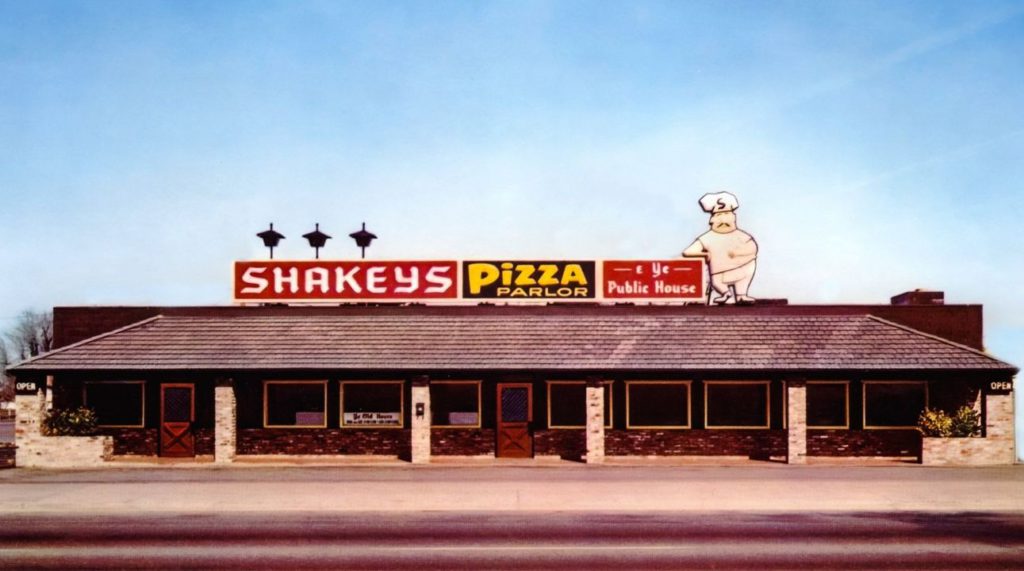
American pizza history began a new chapter when Sherwood “Shakey” Johnson opened the original Shakey’s Pizza in Sacramento in 1954. Thin-crust pizzas were served while player pianos and ragtime music created a festive atmosphere that differentiated the dining experience from competitors. The company expanded internationally and introduced the pizza buffet concept that would later become industry standard. Competition and evolving consumer preferences led to the closure of most American locations by the 1990s. In a remarkable twist of restaurant evolution, Shakey’s—a brand most Americans think vanished—continues to thrive with over 500 restaurants in Asia, proving that sometimes failure in one market becomes extraordinary success in another once you adapt your pizza to local tastes.
13. Godfather’s Pizza: A Bold and Flavorful Alternative
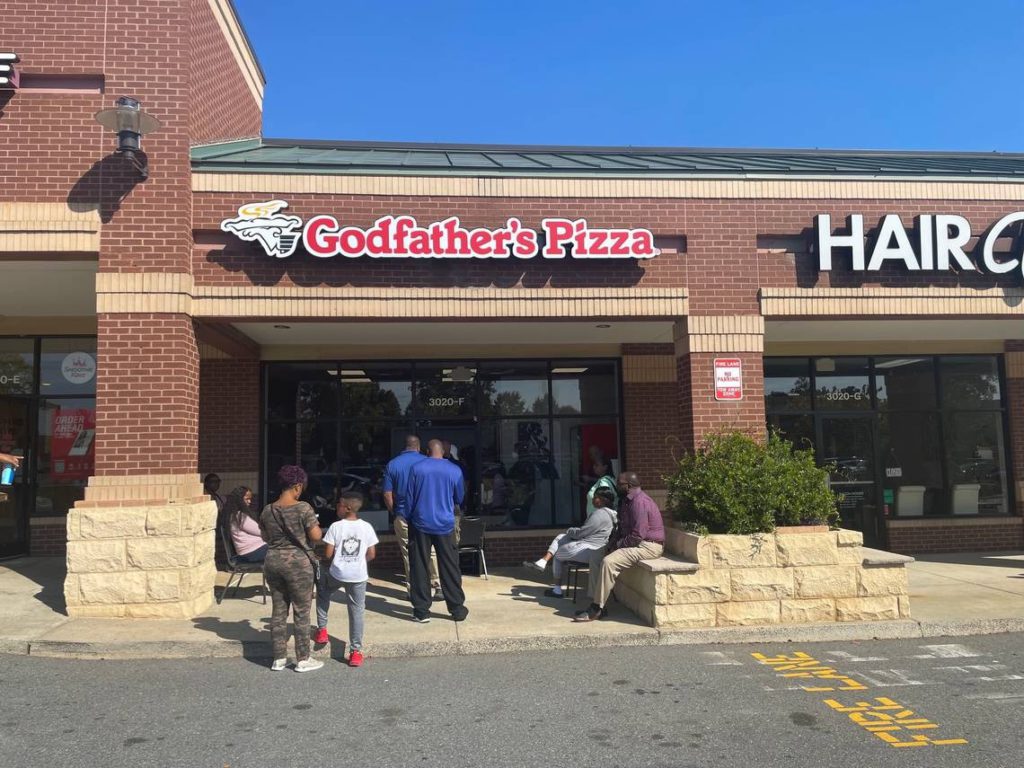
Willy Theisen established a distinctive pizza identity when he founded Godfather’s Pizza in Omaha in 1973. The chain specialized in hearty, thick-crust pizzas topped with abundant ingredients and a slightly sweet sauce that differentiated them from competitors. Expansion accelerated under Herman Cain’s leadership in the 1980s, growing to over 900 locations throughout the United States. Financial difficulties and management changes resulted in significant contraction of the brand’s national presence. While many chains disappear completely, Godfather’s achieved what industry insiders call “the pizza fade”—retreating from national prominence to regional success with 600 locations concentrated in the Midwest, where locals still make them an offer they can’t refuse: loyalty in exchange for that distinctive thick crust other chains can’t replicate.
12. Pizza Cucinova: Ohio’s Artisan Disappearance
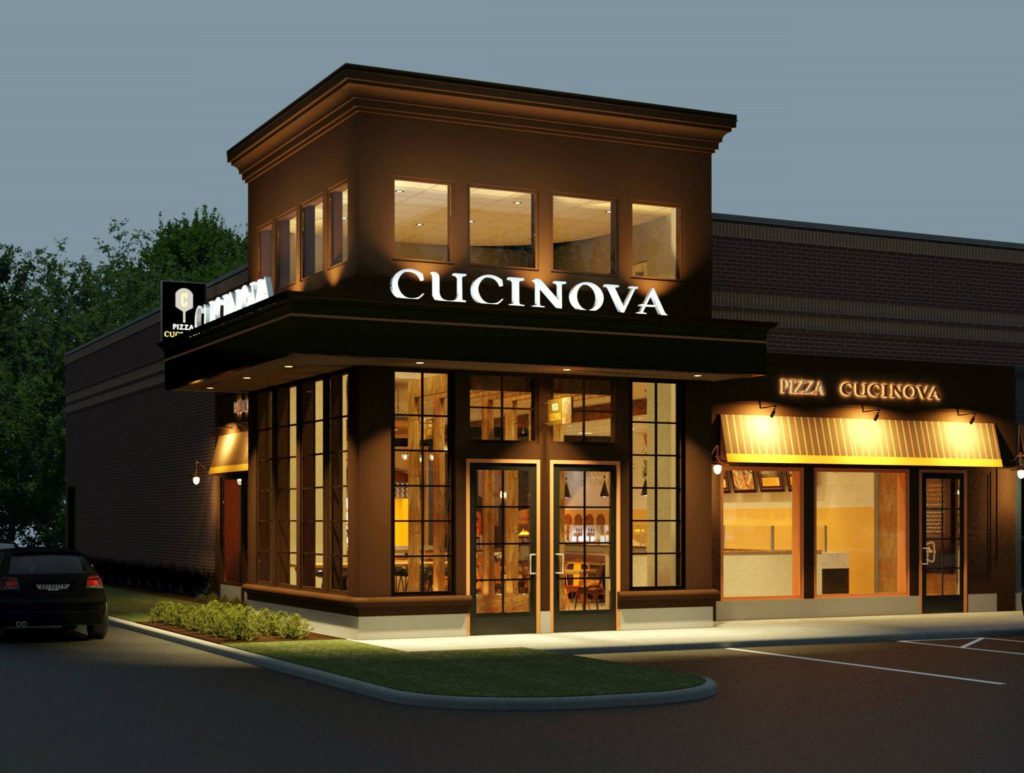
The fast-casual artisan pizza trend reached Ohio when Pizza Cucinova opened in 2013, offering wood-fired pizzas with premium ingredients. Customization allowed diners to select high-quality toppings like prosciutto, arugula, and fresh mozzarella before watching their creations cook in minutes. Several locations opened throughout Ohio, attracting customers seeking a more sophisticated pizza experience than traditional chains offered. Without warning or explanation, Pizza Cucinova closed all locations in 2019. Their ghost-like vanishing act—no press release, no social media goodbye, just locked doors one morning—represents the modern restaurant equivalent of sailing into the Bermuda Triangle, leaving even industry analysts wondering if you can build a sustainable business model when your artisanal ingredients cost three times what the big chains pay.
11. Mr. Gatti’s Pizza: Family Fun with a Sweet Sauce
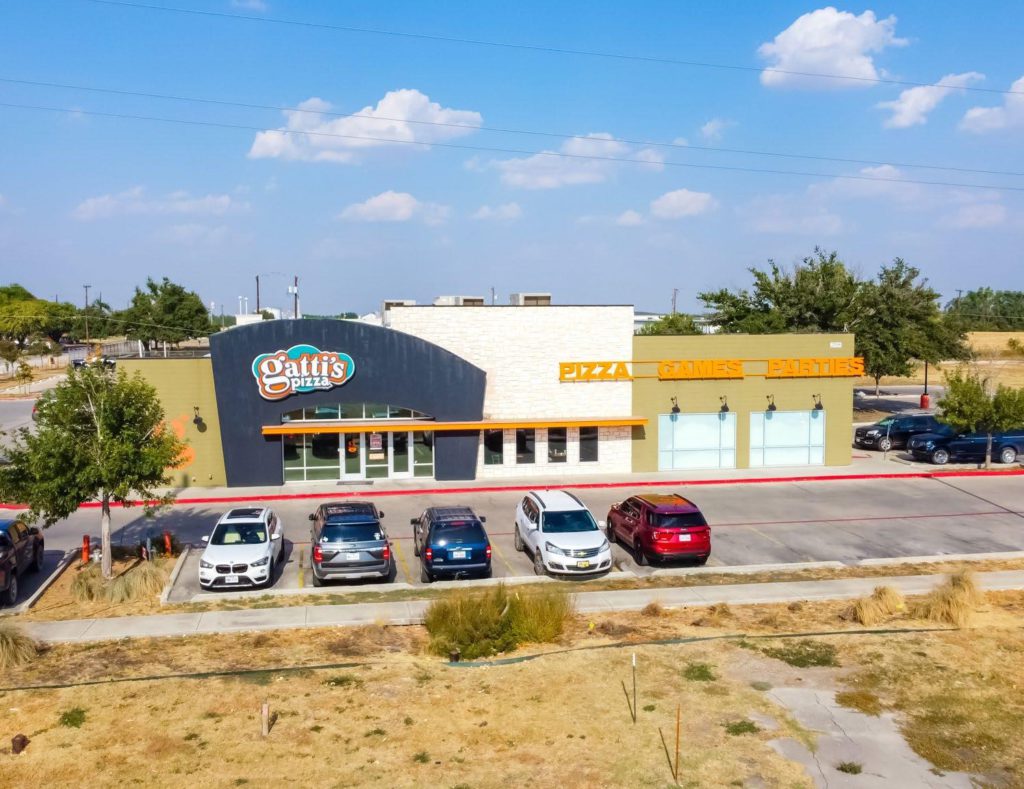
James Eure created a distinctive pizza brand when he opened the first Mr. Gatti’s Pizza in Austin in 1969. A slightly sweet sauce became the chain’s signature, setting it apart from competitors focused on more traditional flavor profiles. Extensive game rooms branded as “GattiLand” or “GattiTown” offered immersive entertainment experiences that appealed to families seeking both dining and recreation. The chain expanded throughout the South and Midwest, becoming particularly popular in Texas where their buffets provided value-conscious options. Half a century later, Mr. Gatti’s enduring recipe for success—combining slightly sweet sauce with family entertainment—proves that sometimes you don’t need to reinvent pizza, just give families a reason to choose your restaurant over the countless other options competing for their dining dollars.
10. Pizza Corner: An International Pizzeria Franchise
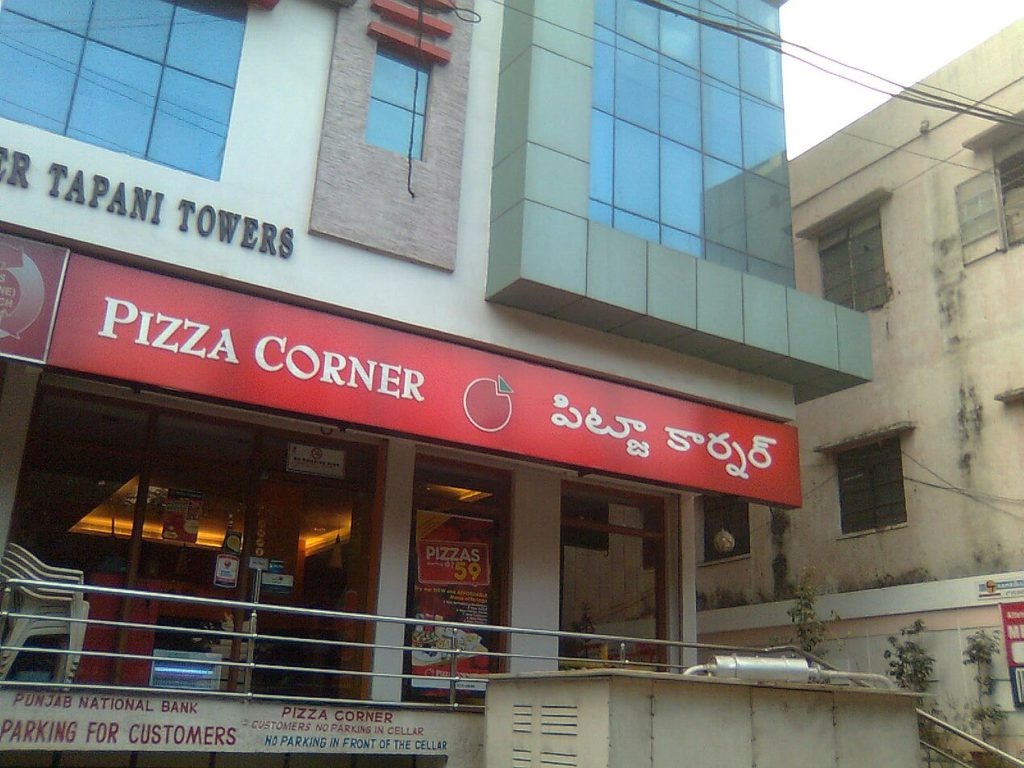
Traditional pizza concepts evolved when Pizza Corner expanded into international markets, adapting recipes to include local flavors and ingredients. The menu encompassed regional specialties alongside pastas and sides that complemented their core offerings, creating fusion dining experiences tailored to local tastes. Locations across Asia flourished, with particular success in India where Pizza Corner introduced many consumers to pizza for the first time. The brand’s independent operation concluded when Papa John’s acquired the company in the early 2010s. Pizza Corner’s greatest legacy lies not in its brand name but in its pioneering approach to cultural adaptation—teaching the industry that if you want global success, you must first respect local palates, a lesson you’ll taste in today’s internationally successful chains that offer tikka masala pizza in Mumbai and bulgogi pizza in Seoul.
09. Pistol Pete’s Pizza: A Western-Themed Family Destination
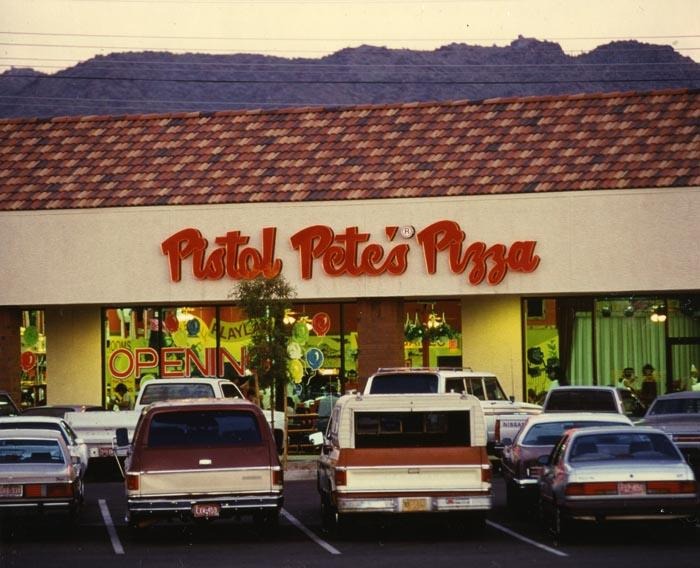
The American Southwest gained a distinctive restaurant chain when Pistol Pete’s Pizza opened across the region in the 1980s. Wild West decorations surrounded diners while children enjoyed indoor merry-go-rounds and extensive arcade areas filled with popular games. Regional expansion focused on Arizona, California, Texas, Nevada, and New Mexico, establishing Pistol Pete’s as a popular destination for celebrations and family outings. Larger entertainment restaurant concepts proved difficult to compete against as national chains expanded. When Peter Piper Pizza acquired the brand in 1995, they didn’t just buy restaurants—they executed a textbook example of strategic acquisition, eliminating a regional competitor while simultaneously gaining established locations and customer base, demonstrating why sometimes in the pizza business, if you can’t beat ’em, you buy ’em.
08. Pietro’s Pizza: Authentic Italian in the Pacific Northwest
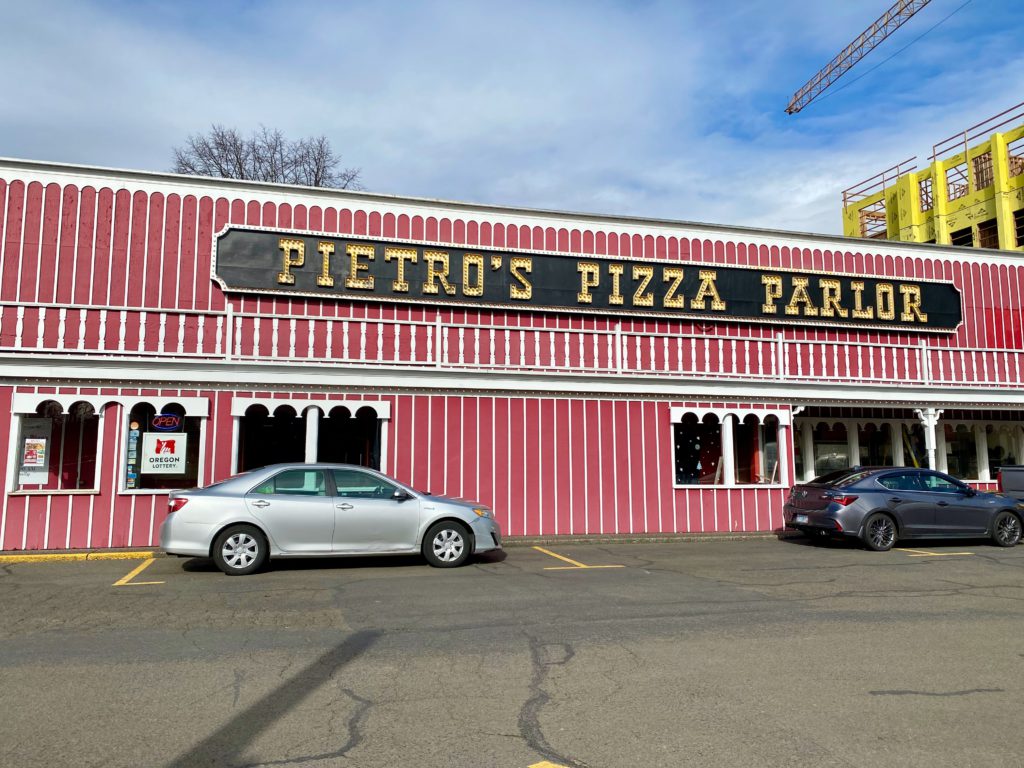
Italian culinary traditions found expression in the Pacific Northwest when Pietro’s Pizza opened across the region in the 1950s. Hand-tossed crusts and house-made sauces prepared according to traditional techniques distinguished Pietro’s from competitors focused on faster production methods. Family ownership maintained standards while red-checkered tablecloths and attentive service established neighborhood connections lasting decades. National marketing campaigns from larger chains steadily eroded Pietro’s market share as competition intensified. The surviving independently-operated Pietro’s restaurants represent what industry experts call “heritage pizzerias”—establishments that transcend their original chain identity to become local institutions, where you can still taste authentic recipes that pre-date the homogenization of American pizza by national brands.
07. Zorba’s Pizza: A Blend of Pizza and Greek Cuisine
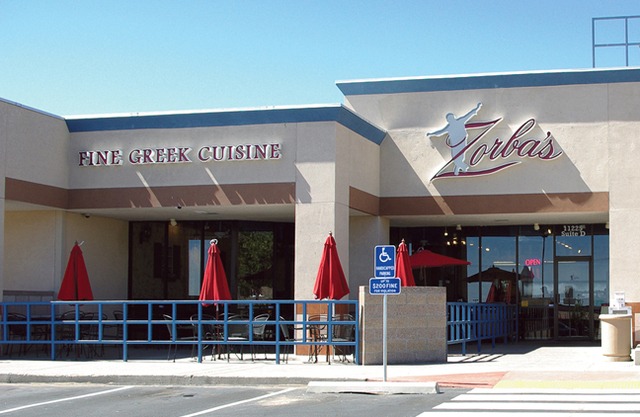
Culinary fusion arrived in the late 1970s when Zorba’s Pizza combined traditional pizza with authentic Greek dishes on a single menu. Patrons ordered pepperoni pizzas alongside spanakopita and gyros, satisfying diverse cravings while exploring Greek flavors that many Americans hadn’t previously encountered. Midwestern states proved particularly receptive to this combination of familiar and novel options that appealed to families seeking variety. Focused national pizza chains with streamlined menus and extensive marketing gradually outcompeted Zorba’s hybrid concept. While the chain largely disappeared, Zorba’s pioneering menu philosophy—that Mediterranean flavors belonged on pizza—now appears in sophisticated form at trendy pizzerias nationwide where you’ll find artisanal pies topped with feta, olives, and tzatziki sauce, proving sometimes visionaries are just ahead of their time.
06. Major Magic’s All-Star Pizza Revue: Robots and Revue
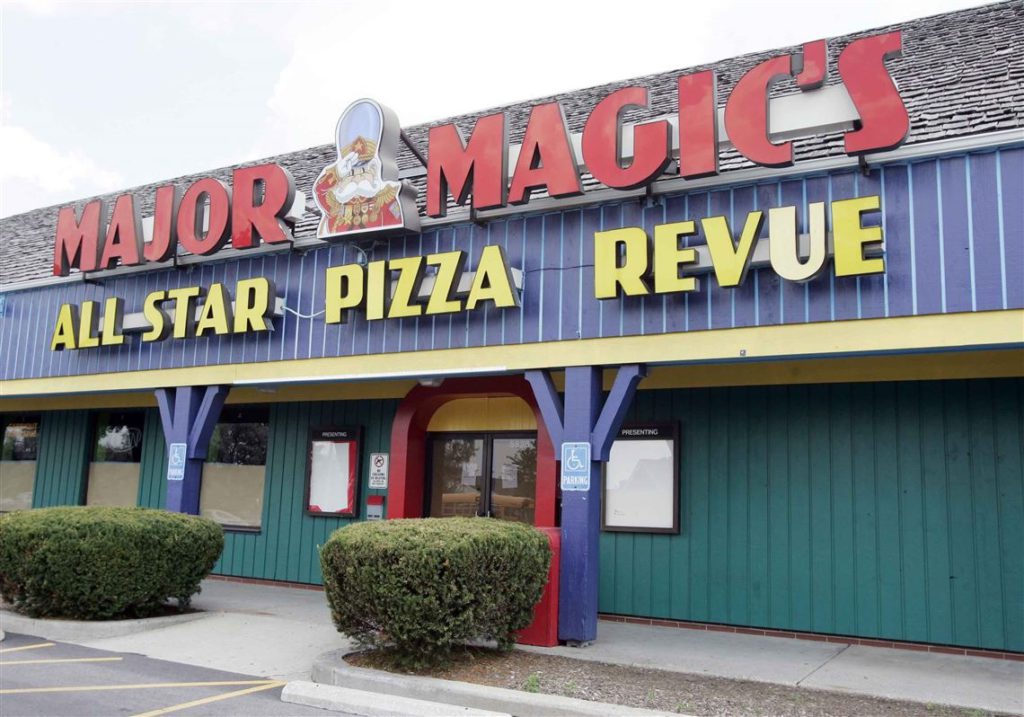
Family entertainment evolved in the early 1980s when Major Magic’s All-Star Pizza Revue opened across the Midwest. Sports-themed animatronic performers entertained between arcade sessions and pizza dining, creating immersive experiences for visitors of all ages. Direct competition with ShowBiz Pizza Place and Chuck E. Cheese’s positioned Major Magic’s in the growing family entertainment center market that gained popularity throughout the decade. Maintaining complex animatronic systems while keeping pace with changing entertainment preferences proved challenging for the regional chain. The dancing robots of Major Magic’s have been silenced for two decades now, but you can still find their vintage performers selling for thousands on collector sites—proving that yesterday’s birthday party entertainment becomes tomorrow’s nostalgic memorabilia, with some former customers willing to pay more for a single animatronic character than they once spent on an entire birthday party.
05. Noble Roman’s Pizza: Midwest Hand-Tossed Tradition
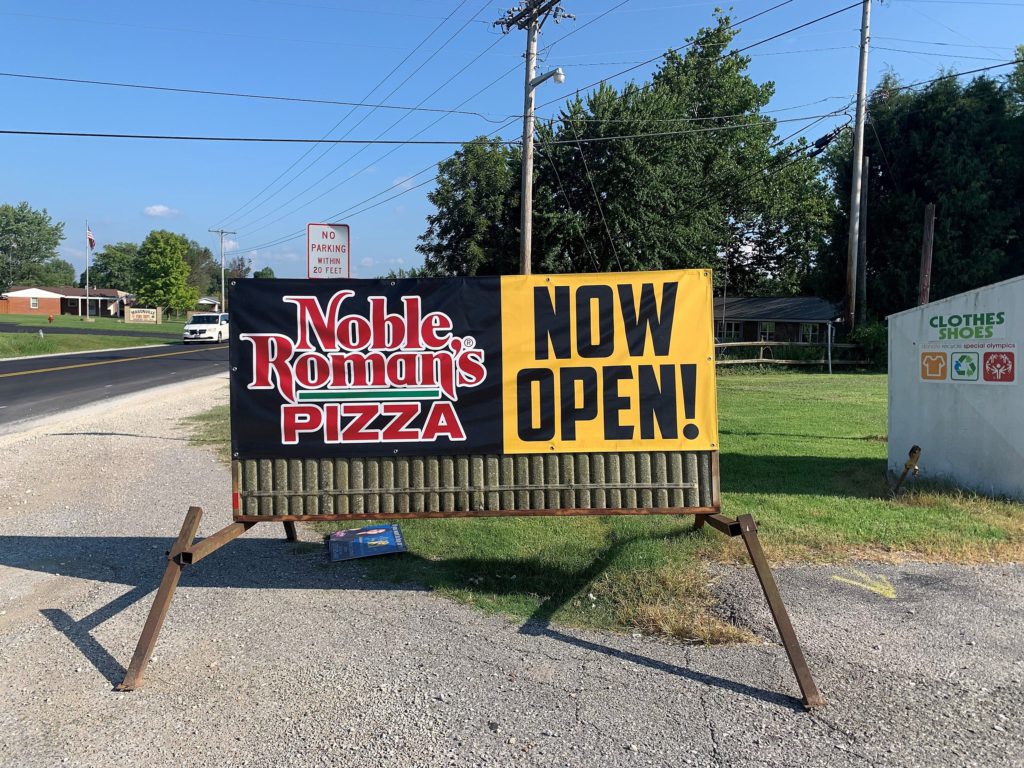
Bloomington, Indiana became home to a new pizza tradition when Noble Roman’s opened in 1972, focusing on hand-tossed dough and quality ingredients. Exhibition kitchens allowed customers to watch employees hand-toss pizza dough, establishing a trademark experience that differentiated the brand. Expansion targeted non-traditional venues like mall food courts, convenience stores, and airports, helping Noble Roman’s grow to over 1,000 locations at its peak. Franchise disputes and changing consumer preferences triggered significant decline for the once-prominent Midwestern chain. Noble Roman’s transformation from dominant chain to niche player illustrates the restaurant industry’s brutal evolution—today, you’re more likely to find their take-and-bake pizzas in a grocery store than a dedicated restaurant, showing how brands must adapt or face extinction in the hypercompetitive $46 billion American pizza market. If you’re enjoying getting to know more about many forgotten pizza chains, you also might like this piece about the most expensive foods in the world.
04. Sbarro: New York Style Pizza by the Slice

American mall dining transformed forever when the Sbarro family brought their Brooklyn pizza recipes to shopping centers, beginning in 1956. Ready-to-eat slices introduced millions to authentic New York-style pizza served on paper plates, often consumed while walking between stores. International expansion established Sbarro in malls, airports, and transportation hubs across more than 25 countries, making the brand synonymous with quick-service pizza in high-traffic locations. Declining mall traffic nationwide contributed to Sbarro’s financial struggles in the new millennium. Sbarro’s saga represents the quintessential cautionary tale of retail-dependent restaurant chains—when you build your entire business model around mall food courts, you’re essentially betting your future on the continued relevance of shopping malls, a wager that has proven increasingly risky as you and millions of others shift to online shopping.
03. Marc’s Funtime Pizza Palace: A Chuck E. Cheese’s Revival

Ohio became home to a Chuck E. Cheese alternative when Marc’s Funtime Pizza Palace opened in Southland in 1987, acquiring former Chuck E. Cheese locations. Animatronic shows, arcade games, and pizza filled spaces specifically designed for children’s entertainment while providing comfortable seating for parents. Multiple locations operated across Ohio and neighboring states, serving families seeking combined dining and entertainment venues during the late 1980s and 1990s. National brands with greater resources and revised entertainment concepts gradually diminished Marc’s appeal. The chain’s 2004 closure represents the cruel reality of entertainment-restaurant economics—when your business requires maintaining expensive animatronic shows that children increasingly find less impressive than their handheld video games, you’re fighting a losing battle that not even the tastiest pizza can overcome.
02. Ken’s Pizza: Oklahoma’s Unpretentious Delight
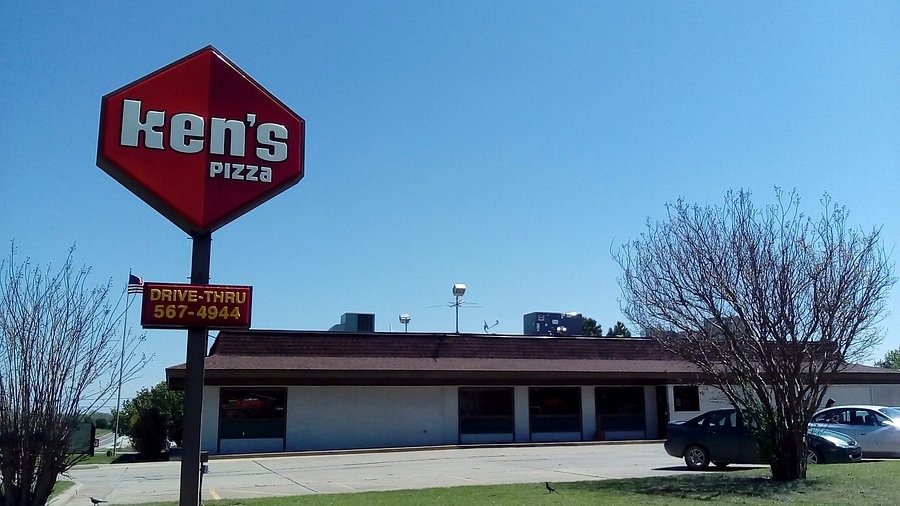
Oklahoma’s pizza landscape gained a distinctive local chain when Ken’s Pizza opened in 1961. Thin-crust pizzas with crispy edges and generous toppings became the signature offering in restaurants designed for comfortable family dining. Expansion throughout Oklahoma and into neighboring states brought Ken’s Pizza to smaller communities often overlooked by national chains entering the market. Massive advertising campaigns from larger pizza corporations challenged Ken’s ability to maintain market share as competition intensified. The surviving Ken’s locations demonstrate that in the pizza business, sometimes being forgotten by national trend-watchers is your secret weapon—these restaurants still draw loyal multi-generational customers who would rather have their pizza made the same way they’ve enjoyed it for 60 years than try whatever cauliflower-crusted, sriracha-drizzled concoction is trending on Instagram this month.
01. Big Slice Pizza: Oversized Slices for On-the-Go
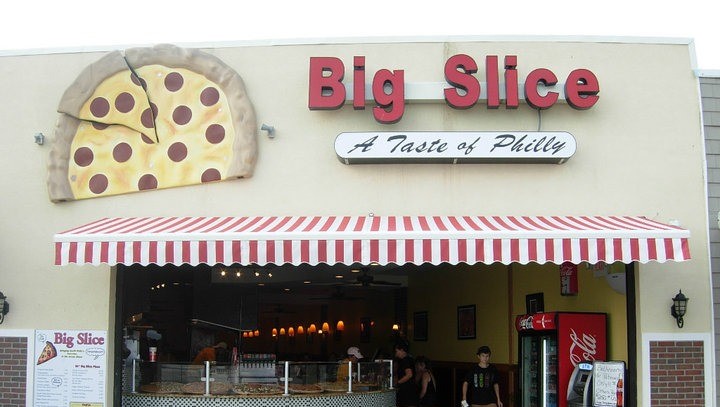
Urban pizza consumption patterns changed when Big Slice Pizza introduced massive, New York-inspired slices in 1971. These enormous portions often extended beyond the paper plates they were served on, providing substantial meals for customers with limited time and budgets. Shopping malls and college towns proved particularly successful locations, where straightforward approach and value pricing attracted students and shoppers seeking quick meals. Competition from both national chains and trendy artisanal pizzerias gradually squeezed Big Slice out of its market niche. While Big Slice may have folded in 2016 after 45 years in business, their “bigger is better” philosophy lives on at college-town pizzerias nationwide that still solve the fundamental problem they identified—when you’re hungry and have only $5 in your pocket, nothing satisfies quite like a slice of pizza so massive you need two hands and a sturdy paper plate to handle it.





















